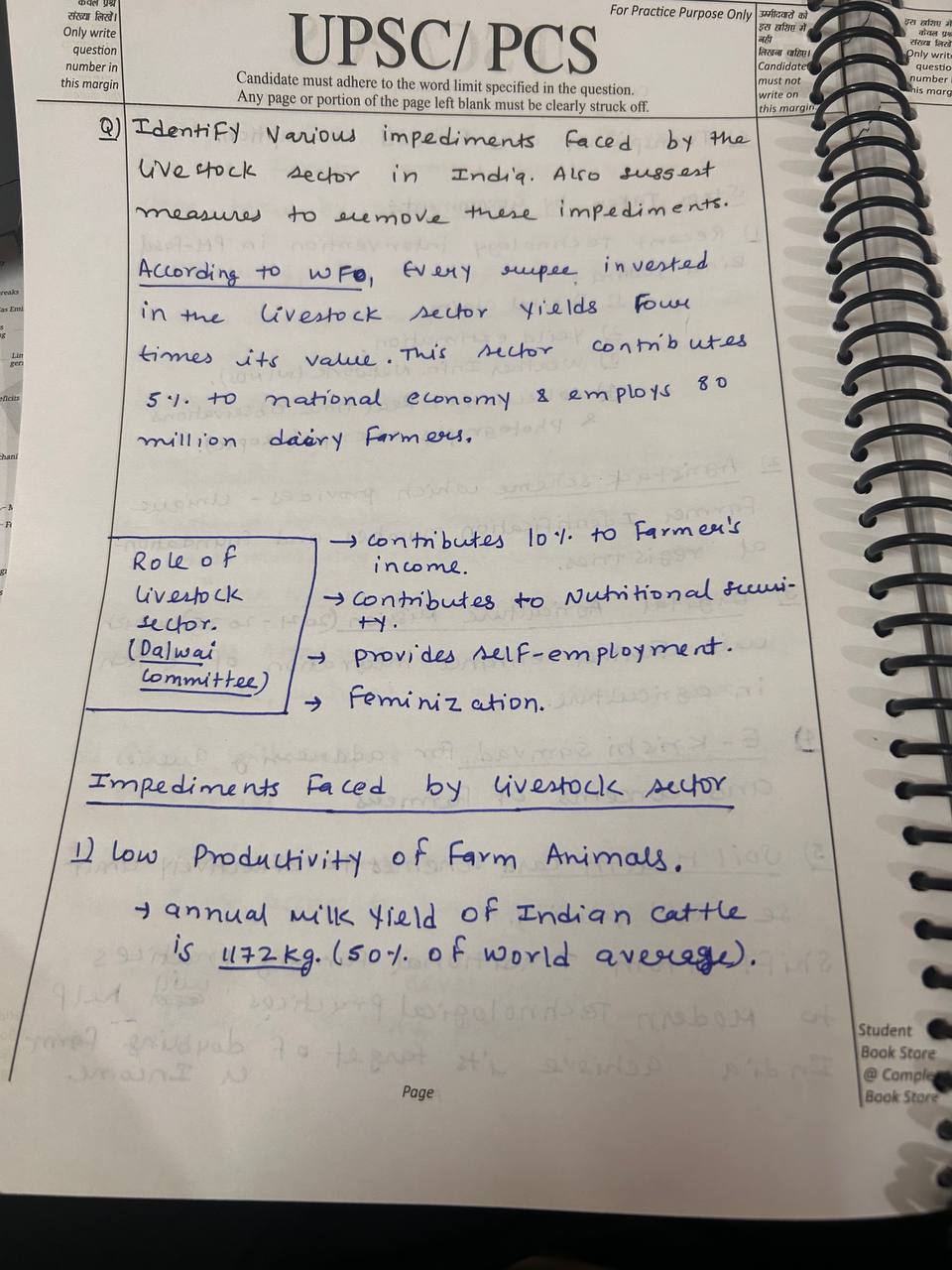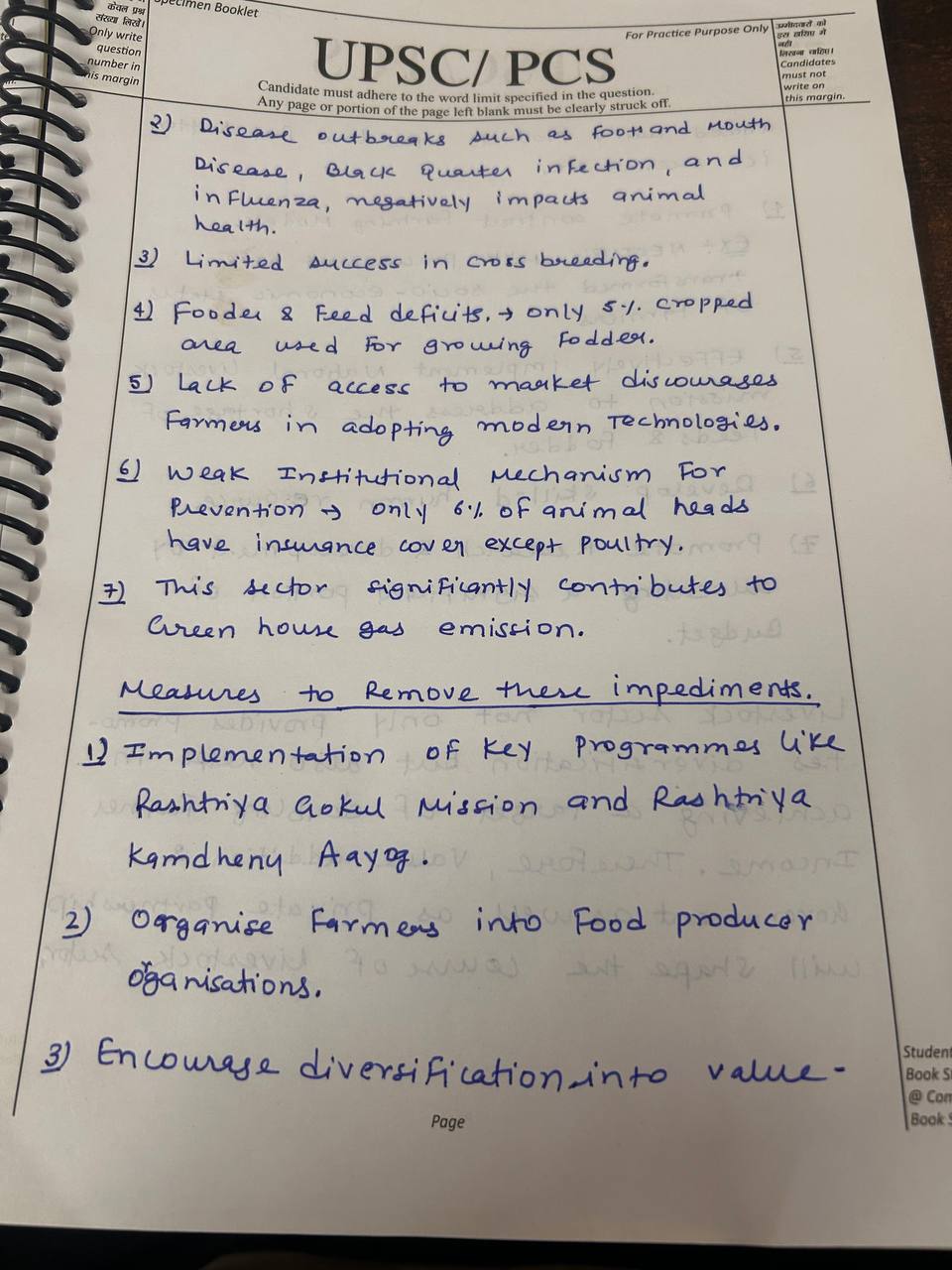Roadmap for Answer Writing To effectively answer the question regarding the role of millets in ensuring health and nutritional security in India, follow this structured approach: Introduction Define millets and their significance in the agricultural landscape of India. Mention the recognition of millets by ...
Model Answer Definition of Urban Agriculture Urban agriculture involves the cultivation of food and non-food products within urban and peri-urban spaces, which can include activities such as vertical farming, rooftop gardens, aquaponics, and urban beekeeping. Globally, urban agriculture contributesRead more
Model Answer
Definition of Urban Agriculture
Urban agriculture involves the cultivation of food and non-food products within urban and peri-urban spaces, which can include activities such as vertical farming, rooftop gardens, aquaponics, and urban beekeeping. Globally, urban agriculture contributes approximately 5-10% of legumes, vegetables, and tubers and up to 20% of all food supply, providing locally grown produce to city residents.
Benefits of Urban Agriculture
- Health and Nutrition Benefits
Urban agriculture reduces the supply chain by eliminating intermediaries, which helps maintain food nutrients and reduce food damage during transport. This local supply of fresh produce can reduce reliance on processed foods, potentially lowering the risk of lifestyle diseases related to poor diet. Source: FAO, Urban Agriculture Report 2021. - Economic Benefits
By shortening the distance between farm and consumer, urban agriculture strengthens the resilience of the food supply chain and reduces dependency on factors like oil prices and agricultural imports. It also supports job creation through the establishment of urban farming businesses, providing employment opportunities within local communities. Source: World Bank, Agriculture in Cities Review. - Environmental Benefits
Urban agriculture supports urban biodiversity, improves air quality, and can mitigate the urban heat island effect. It helps reduce carbon emissions by minimizing transportation needs and packaging. Additionally, green spaces in cities can act as carbon sinks and reduce stormwater runoff, particularly through techniques like aquaponics and street landscaping. Source: UN Environment Programme. - Waste Management
Organic waste can be composted for use in urban farms, reducing landfill needs and contributing to sustainable waste management. Source: Global Waste Management Outlook, UNEP.
Challenges of Urban Agriculture
- Limited Access and High Costs
Urban farming often requires costly private land or rooftop spaces, making it financially exclusive and limiting broader access. Source: Urban Land Institute Report. - Water Demand
Urban agriculture can strain city water resources since it often relies on potable municipal water, contributing to potential shortages. Source: World Resources Institute. - Lack of Recognition
Many governments lack formal policies supporting urban agriculture, and some view it as a nuisance. For instance, farming on the Yamuna floodplain in India has historically been disregarded in urban planning. Source: Ministry of Urban Development, India. - Other Issues
Urban farms face challenges like radiant heat from surrounding concrete structures, potential chemical contamination, and risks of theft or vandalism. Source: FAO, Challenges in Urban Agriculture.
Urban agriculture holds great promise for sustainable city living, but recognizing its challenges is essential for effective integration into city planning.
See less



Model Answer Introduction Millets, recognized by the United Nations as the International Year of Millets in 2023, are vital for enhancing health and nutritional security in India. These ancient grains are not only nutritious but also resilient to climate change, making them a sustainable choice forRead more
Model Answer
Introduction
Millets, recognized by the United Nations as the International Year of Millets in 2023, are vital for enhancing health and nutritional security in India. These ancient grains are not only nutritious but also resilient to climate change, making them a sustainable choice for the future.
Health Security
Nutritional Security
Conclusion
Millets are essential for ensuring both health and nutritional security in India. Their adaptability and resilience make them a cornerstone for sustainable agricultural practices, contributing to food security while empowering farmers. Through increased awareness and supportive policies, millets can play a transformative role in the nation’s nutritional landscape.
Relevant Facts
By promoting the cultivation and consumption of millets, India can enhance health outcomes and nutritional security for its population.
See less